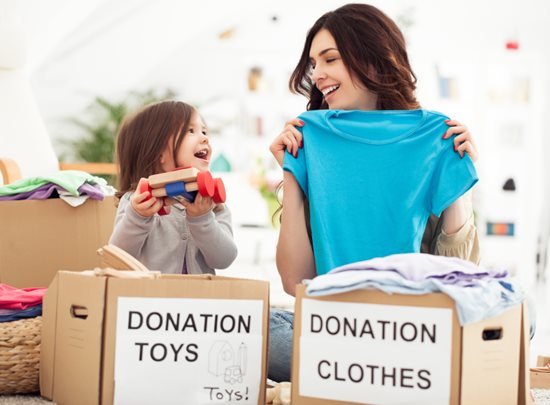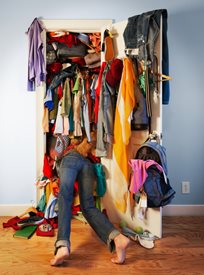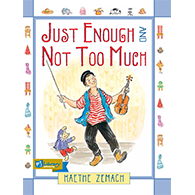
When the call came to donate to the synagogue rummage sale, I was hesitant. Between the kids, work, and everything else it just didn't seem like I'd have the time. And then we got our PJ Library books in the mail. My son received Just Enough and Not Too Much which quickly became a new favorite (meaning that we read it about 20 times in one day) and it got me thinking about the connection between the Jewish value of appreciating what we have and the recent craze spurred by Marie Kondo’s book The Life Changing Magic of Tidying Up.
If you haven’t heard the buzz about this book, it is essentially a manifesto on paring down the things that you own to only what “sparks joy.” While that concept sounds nice, I was feeling a great disconnect between things that seemed necessary in my home (like my Swiffer, my husband’s gym socks, and the cat’s litter box) and those things that really brought me joy. Aren’t there things we need that we don’t necessarily want? Is there a value to owning things that just bring us joy, but aren’t really integral to daily living?
At first, I couldn't really get behind the idea of talking to socks and thanking them for their service and making sure shirts were happy in how they were folded. Yet, as my family has grown and our home seems to have shrunk, I'm starting to get comfortable with the idea of less is more. So, I set out to follow Kondo's suggestions.
 I put all the items from my bedroom on our bed and went through each one, bidding a fond farewell to those things that were no longer serving a purpose and just taking up space. I rehung and refolded clothes based on Kondo’s model, and saw my drawers and closet no longer bursting at the seams. It felt great. Granted, all of this is challenging to do while living with a 3- and 5-year-old who are, sometimes, very connected to a rock they found in the park or a shirt that hasn’t fit in over a year. But who I am to argue with what brings other people joy? So, I spent time with my children downsizing the amount of toys and clothes they had, and talked to them about who might benefit from receiving these items.
I put all the items from my bedroom on our bed and went through each one, bidding a fond farewell to those things that were no longer serving a purpose and just taking up space. I rehung and refolded clothes based on Kondo’s model, and saw my drawers and closet no longer bursting at the seams. It felt great. Granted, all of this is challenging to do while living with a 3- and 5-year-old who are, sometimes, very connected to a rock they found in the park or a shirt that hasn’t fit in over a year. But who I am to argue with what brings other people joy? So, I spent time with my children downsizing the amount of toys and clothes they had, and talked to them about who might benefit from receiving these items.
How do we differentiate between what we want and what we need? And how do we make that concept accessible to our children? At the start of Just Enough and Not Too Much we read that Simon the Fiddler has everything he needs, but that he grows to want more. Pirke Avot, a popular 2nd century compilation of ethical teachings and maxims, remind us “Who is rich? The person who is happy with what he has.” By really examining each object in our home, we were certainly able to make some headway with being comfortable with what we have.
We recently spent a week in Florida with only the books and toys that could fit in the kids’ small back packs, and you know what? We really didn't miss all the other stuff we'd left at home (we forgot the stroller, as well, but that's another story for another day...).
So in the end I filled my car with donations that will be put to better use by someone else and that no one in my house will even notice are missing. An incredible weight was lifted when I dropped all those bags of stuff in the Social Hall at the synagogue, thanking them all for how well they served our family through the years, and knowing that they may bring joy to another family.
April 1, 2016